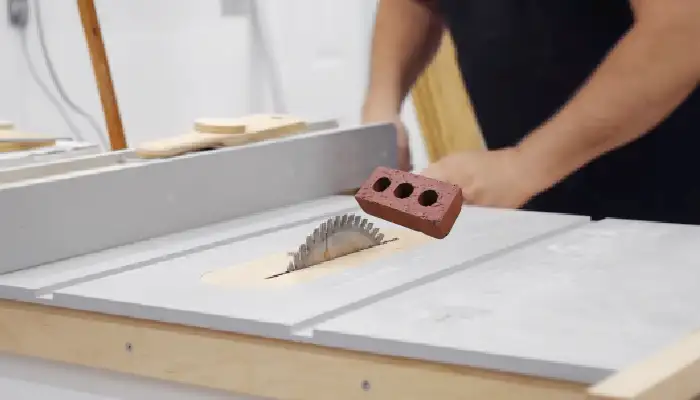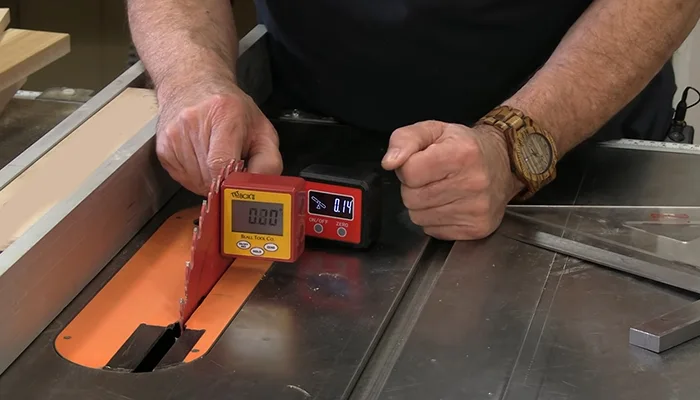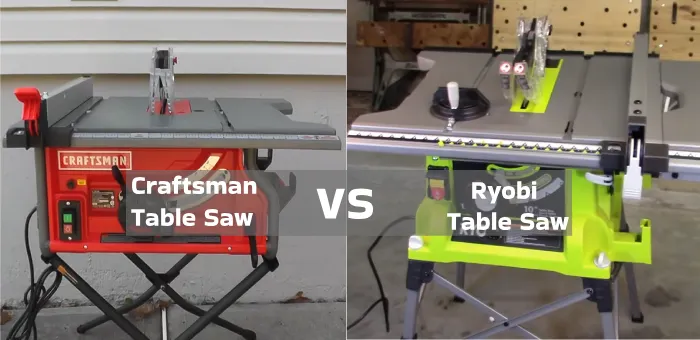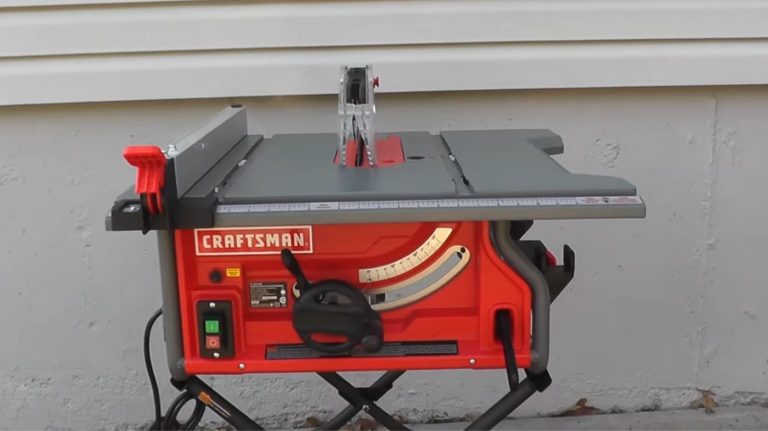Can You Cut Brick With a Table Saw: Explanation
Have you ever thought about using a table saw to cut through brick? Surprisingly, it’s achievable. The table saw a multipurpose device, which can assist you with various ventures, including brick cutting.
You can cut bricks with a table saw with the proper blade and technique. But remember there are certain precautions and safety measures to ensure accuracy and efficiency. Cutting through bricks requires a specific type of masonry blade, and you must take safety precautions.
Today we’ll look closer at what you must consider before cutting bricks with a table saw. We will also discuss how to cut bricks using a table saw, and what other tools you can use to cut bricks by hand. So keep reading.
What to Think About Before Cutting Bricks Using a Table Saw?
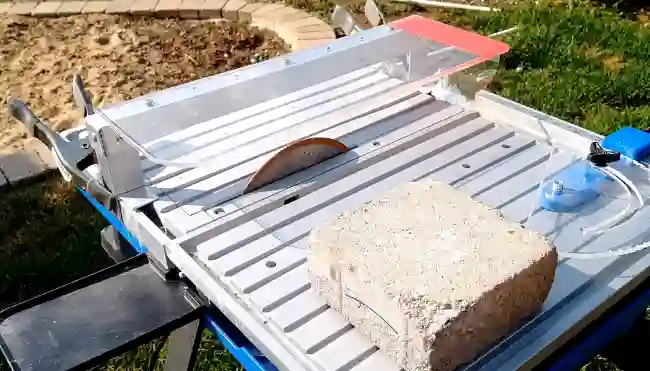
Although a table saw allows you to cut through bricks. But before cutting bricks, several important factors must be considered.
- Dust Control:
- Safety Gear:
- Blade Selection:
- Work Area:
- Marking and Measuring:
- Cutting Techniques:
Dust Control:
Table saws can create a lot of dust when cutting bricks. So if you want to minimize the amount of dust, consider using a dust collection system or wet-cutting method with proper precautions. With dust collection systems, you can keep your workspace clean and reduce the risk of inhaling harmful particles.
Wet cutting uses water to reduce dust production, but you need a proper water supply and must take precautions against electrical hazards. Wet cutting also requires additional cleanup and maintenance to prevent rust and corrosion on your tools.
Safety Gear:
Wear protective gear like goggles, gloves, and masks when cutting bricks. They act like armor against flying debris and dust storms. Always wear safety goggles or glasses during cutting to protect your eyes from debris that may fly off.
Also, wear gloves to protect against cuts and punctures from sharp edges. Brick cutting generates a lot of dust, which can cause respiratory problems. So, always wear a dust mask to avoid inhaling harmful dust particles.
Blade Selection:
To achieve optimal cutting results when dealing with bricks, it is recommended to use a diamond blade specifically designed for masonry work. With this type of blade, you can cut through tough materials like bricks without wearing them out quickly.
Both professionals and DIY enthusiasts highly value its precision and accuracy. A dull blade can cause unnecessary friction and slow the cutting process, so ensure your diamond blade is in good condition and sharp enough.
Work Area:
For cutting bricks on your table saw, you need a sturdy and robust workbench or table that can hold the weight of the materials. A flimsy work surface can result in dangerous accidents and harm your saw.
Always ensure that your table is comfortable, level, and stable to avoid wobbling while cutting. Keep your workspace tidy and organized to maintain control over the bricks.
A cluttered work area can lead to costly and dangerous mistakes and accidents. Store your bricks in designated areas before and after cutting for excellent and safe results.
Marking and Measuring:
Before making any cuts, accurately measure and mark the bricks to ensure precision in your project. You can use a straightedge or a square to create straight lines and double-check your measurements to avoid mistakes.
Take time during this step to ensure that your cuts are accurate and your project turns out how you want it to. Use a pencil or chalk to create your lines when marking the bricks. Make sure the lines are visible and easy to follow.
Cutting Techniques:
When cutting bricks with a table saw, you must exercise caution and patience to ensure the best results. Ensure the blade is appropriate for brick cutting and securely fastened to the saw.
When you’re ready to cut, maintain a firm grip on the brick, ensuring your hands are clear of the blade’s path. Move the brick steadily along the fence or guide, allowing the blade to work without forcing the brick through.
How to cut bricks with a table saw?
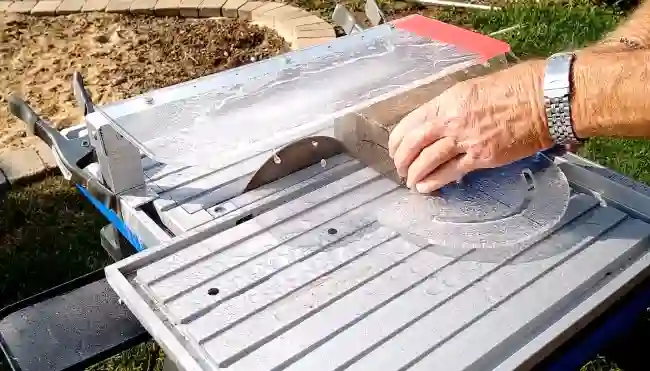
Before you begin cutting bricks with a table saw, you should follow several key steps:
Step 1: Gather the Necessary Equipment
Grab the safety gear, including gloves, goggles, and a dust mask. Also, get a diamond blade table saw and the bricks to be cut. Make sure the diamond blade is suitable for masonry work to ensure a clean and precise cut.
If you plan on cutting many bricks, you might want to use dust collection or a wet-cutting setup to minimize dust buildup. Once you have all the necessary equipment, set up your workspace and ensure the bricks are properly supported and secured.
Step 2: Prepare the Work Area
Get your workspace ready for cutting bricks by setting up a stable and secure workbench or table that can support the weight of the bricks. Ensure the table saw is on a level surface and the blade is properly aligned and tightened.
Ensure enough space to maneuver the bricks and safely operate the table saw. Clear the work area of any clutter or potential hazards, such as loose tools, cords, or debris.
Before cutting, wear appropriate safety gear, including eye protection, ear protection, and gloves. Make sure that the workbench is clean and free of dust and debris. You can also use a vacuum cleaner or compressed air to remove any debris that may have accumulated on the work surface.
Step 3: Wear Safety Gear
Wear proper safety gear while cutting bricks with a table saw. Defend your eyes and hands from injuries by wearing safety goggles and gloves, like a warrior donning armor before the battle.
Make sure to wear a dust mask or respirator, as cutting brick produces a lot of harmful dust particles that can be harmful if inhaled. Protect yourself and breathe easy with the right safety gear.
Step 4: Set up the Table Saw
Now it’s time to prep your equipment by ensuring your blade is suitable for cutting masonry materials and is in good condition. A diamond-tipped or segmented blade with diamond edges is ideal for this task.
Before tightening the blade, ensure it is properly aligned and perpendicular to the saw’s table. A misaligned blade can cause inaccurate cuts and pose a safety hazard. Once the blade is aligned, tighten it securely to prevent it from wobbling during operation.
Next, adjust the saw’s fence or guide to ensure accurate and consistent cuts. Depending on your cutting brick size, the fence should be set to the correct distance from the blade.
Step 5: Mark the Bricks for Cutting
To start marking where to make your cuts, grab a straightedge or square and ensure your lines are precise. Measure and mark the bricks where you want to make the cuts, taking care to avoid mistakes. Double-check your measurements to ensure accuracy and precision.
Using a marker or chalk, draw straight lines across the surface of the bricks where you’ll be making your cuts. Make sure the lines are straight and even, using your straightedge or square as a guide.
Step 6: Prepare for Cutting
Now secure your bricks firmly on the table saw, supporting them with clamps or additional supports so you can slice through them confidently. Take extra precautions when handling bricks as they can be quite heavy and cumbersome to maneuver.
Position the bricks carefully, ensuring they are straight and aligned with the saw blade to achieve the desired results. Consider the type of blade you’ll use for cutting, as a diamond blade is recommended for cutting through bricks due to its strength and durability.
Step 7: Cutting Techniques
Effortlessly guide your heavy brick along the fence, allowing the blade to slice through it easily and smoothly. Keep your hands clear of the blade’s path and maintain control as the blade touches the brick.
Avoid forcing the brick through the blade, as this can cause the blade to bind and potentially kick back. Instead, let the blade cut while you guide the brick along the fence or guide.
Hold the brick firmly and keep a steady pace to ensure a clean and accurate cut. Don’t rush the cut, which can cause the blade to jam or overheat. Stop the saw immediately and adjust the blade or guide if you encounter any resistance.
Can I cut bricks without a table saw?
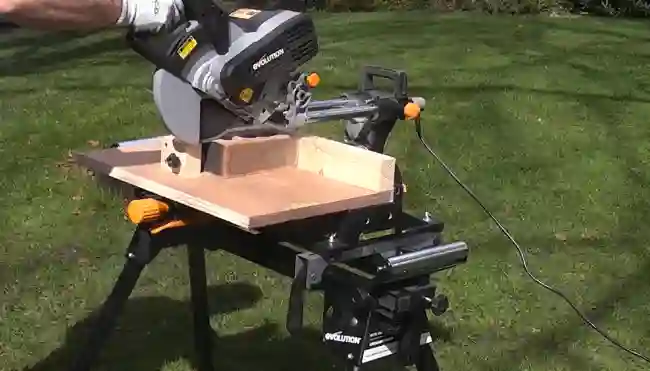
You can still cut bricks without a table saw, but it might take more time and effort. One option is a stationary brick saw, a specialized tool for cutting bricks.
For those without access to a table saw, this type of saw is faster, more accurate, and safer. If you don’t have access to a stationary brick saw, other options, such as a handheld circular saw with a diamond blade, are available.
What tools can be used to cut a brick by hand?
Grabbing a chisel and hammer is a great option for cutting bricks by hand if a table saw isn’t available. While this method is effective, it can be time-consuming and may not produce as clean of a cut as a saw would.
Mark the line where you want to cut the brick using a straight-edge and a pencil. Then, score the line with the chisel by tapping it gently with the hammer. Ensure the bevel face of the chisel faces the cut’s waste side.
Once the line is scored, use the chisel to make a deeper cut by tapping harder with the hammer. Continue this process until the brick is cut all the way through. Remember this process can be time-consuming and requires a bit of patience.
Cut Bricks with a Table Saw: Choose the Right Blade and Gear Up
Cutting bricks with a table saw is a practical, safe, and quick solution for those who regularly work with l bricks and pavers. Choose the correct blade for your saw, keep safety in mind, and wear the appropriate protective gear to prevent injuries.
But remember, using a table saw is just one tool in your arsenal. Sometimes, the best way to cut a brick is by using hand tools. So, keep your toolbox well-stocked with various tools and techniques for cutting bricks, and you’ll be a pro in no time.
Considering these factors, you’re ready to tackle your next brick-cutting project. So, go ahead and give it a try.

